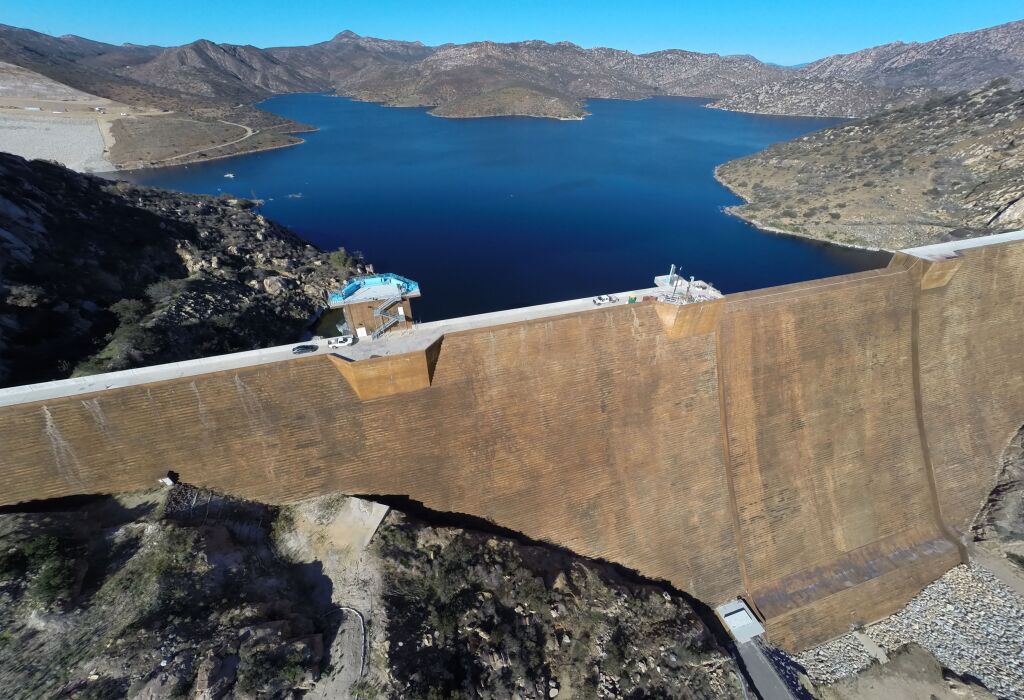A Vital Resource for Water Supply and Recreation
San Diego County, located in Southern California, is home to a diverse array of reservoirs that play a crucial role in supplying water to the region’s growing population and providing recreational opportunities for residents and visitors alike. These reservoirs, nestled amidst picturesque landscapes, are integral to the county’s water management system, ensuring a reliable and sustainable water supply. This document explores some of the key reservoirs in San Diego County and their significance.
Lake Hodges
Lake Hodges, situated near Escondido, is one of the prominent reservoirs in San Diego County. Created by the construction of the Hodges Dam on the San Dieguito River in 1918, the lake has a storage capacity of approximately 30,251 acre-feet. Lake Hodges is not only a vital water supply source but also a popular destination for recreational activities such as fishing, boating, and picnicking. The surrounding Hodges Reservoir Recreation Area offers hiking and biking trails, providing stunning views of the lake and the surrounding hills.

San Vicente Reservoir
The San Vicente Reservoir, located in the eastern part of San Diego County, is the largest reservoir in the region. It was originally constructed in 1943 and later expanded as part of the San Diego County Water Authority’s Emergency Storage Project. The reservoir now boasts a capacity of 247,000 acre-feet, making it a critical component of the county’s emergency water storage. San Vicente Reservoir is also a popular spot for water-based recreation, including fishing, boating, and wakeboarding. The reservoir’s expansion included the construction of new recreational facilities, enhancing the visitor experience.

Lake Murray
Nestled within the Mission Trails Regional Park, Lake Murray is a beloved reservoir and recreational area in San Diego County. Formed by the construction of the Murray Dam in 1918, the lake has a storage capacity of about 4,818 acre-feet. Lake Murray is a favorite destination for local anglers, offering opportunities to catch bass, trout, and catfish. The lake is also surrounded by a scenic 6.4-mile trail that is popular among walkers, joggers, and cyclists. Additionally, the Lake Murray Community Park features picnic areas, playgrounds, and sports fields, making it an ideal spot for family outings.

El Capitan Reservoir
Located in the Cuyamaca Mountains, El Capitan Reservoir is another essential water storage facility in San Diego County. The reservoir was created by the construction of the El Capitan Dam on the San Diego River in 1935 and has a storage capacity of approximately 112,800 acre-feet. El Capitan Reservoir is known for its scenic beauty and is a popular destination for boating, fishing, and water skiing. The surrounding El Capitan Reservoir Recreation Area offers picnic spots and hiking trails, providing visitors with ample opportunities to enjoy the natural surroundings.

Lake Jennings
Lake Jennings, situated in the foothills of the Cuyamaca Mountains near Lakeside, is a picturesque reservoir known for its recreational offerings. The lake was formed by the construction of the Jennings Dam in 1962 and has a storage capacity of around 9,790 acre-feet. Lake Jennings is a well-known fishing spot, stocked with a variety of fish species, including trout, bass, and catfish. The lake also features a campground, picnic areas, and hiking trails, making it a popular destination for outdoor enthusiasts.

Sweetwater Reservoir
Sweetwater Reservoir, located near the city of Chula Vista, is an important water supply source for the South Bay area of San Diego County. The reservoir was created by the construction of the Sweetwater Dam in 1888 and has a storage capacity of approximately 28,079 acre-feet. Sweetwater Reservoir is managed by the Sweetwater Authority and plays a crucial role in providing potable water to the surrounding communities. While the reservoir is primarily used for water supply, it also offers recreational opportunities such as hiking, birdwatching, and picnicking in the nearby Sweetwater Summit Regional Park.

Olivenhain Reservoir
The Olivenhain Reservoir, located in the northern part of San Diego County, is a key component of the San Diego County Water Authority’s Emergency Storage Project. The reservoir was completed in 2003 and has a storage capacity of about 24,000 acre-feet. Olivenhain Reservoir is integral to the region’s emergency water supply system, providing additional storage during drought conditions and emergencies. The surrounding Olivenhain Reservoir Recreation Area offers hiking and equestrian trails, with picturesque views of the reservoir and the surrounding landscape.

Barrett Reservoir
Barrett Reservoir, situated in the rugged terrain of the Cleveland National Forest, is a remote and scenic reservoir in San Diego County. Created by the construction of the Barrett Dam in 1922, the reservoir has a storage capacity of around 37,947 acre-feet. Barrett Reservoir is known for its excellent bass fishing and is a popular destination for anglers seeking a serene and secluded fishing experience. Access to the reservoir is limited and requires a permit, ensuring that the natural beauty and tranquility of the area are preserved.

Conclusion
San Diego County’s reservoirs are vital assets that ensure the availability of a reliable and sustainable water supply for the region’s residents and businesses. These reservoirs also offer a wealth of recreational opportunities, attracting outdoor enthusiasts from near and far. From the expansive San Vicente Reservoir to the tranquil Barrett Reservoir, each of these water bodies plays a unique role in the county’s water management system and contributes to the quality of life in San Diego County. As the region continues to grow, the importance of these reservoirs in supporting both water supply and recreation cannot be overstated.

